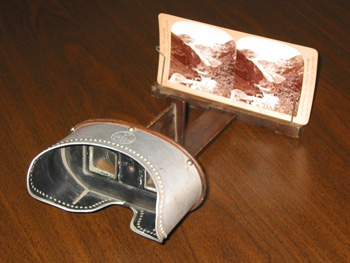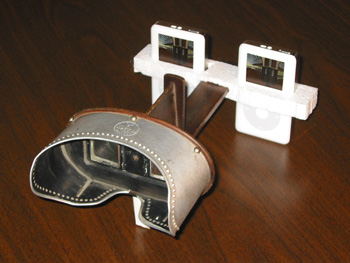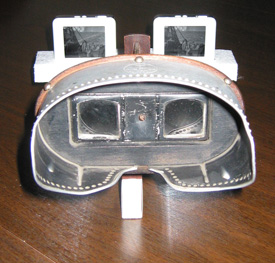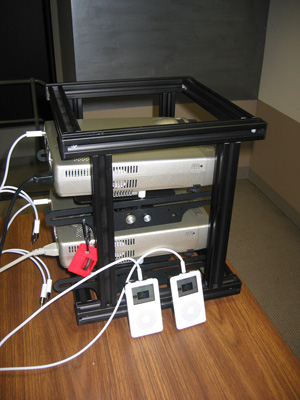In the early days of photography, stereoscopic viewing was all the rage, it is estimated that over half the households in the UK and US owned a stereoscope. Photographers travelled the world taking stereoscopic photographs for a population who were unable to travel widely themselves. Fast forward 100 years and with the help of what is now an antique stereoscope, a digital camera, and a device such as an IPOD-Photo, one can once again view colour stereo-pair images without specialised computer hardware.
For those wondering what "stereoscopic" is all about, viewing stereoscopic images gives an enhanced depth perception. This is similar to the depth perception we get in real life, the same effect IMAX 3D and many computer games now provide. Stereoscopic viewing of any sort involves independent presentation of a different image, called a stereo-pair, to each eye. These stereo-pairs are essentially two different views of the world corresponding to the slightly different views our eyes see because they are separated horizontally. There are many ways of achieving the independent presentation of the stereo-pairs: red/blue glasses is one but it doesn't represent colour well; electronic shutter glasses are commonly used by computer games and some IMAX 3D theatres; another popular method employs polaroid based glasses, these are often used in theme parks and by the author. The first stereoscopes called the Wheatstone's stereoscope was developed around 1833 by British inventor Sir Charles Wheatstone. These first stereoscopes pre-date photography and the stereo-pairs in those days were created as hand drawings, similar to today where we create synthetic stereo pairs using computer graphics. The first stereoscope with a lens is attributed to David Brewster around 1849 and used paper prints contained within a box. The stereoscope shown here was developed around 1868 by Oliver Wendell Holmes and Joseph Bates, it force the eyes to only see the image they are supposed to see by using a lens and placing a physical barrier between the images.
For those who don't know anything about an IPOD-Photo. It is a pocket size device that comes with either a 40GB or 60GB drive, wonderful for carrying around large file collections. When connected to a computer by USB or FireWire it appears as an additional hard disk. The main use is perhaps as a portable music playback device, it has internal software to manage a music library and a standard stereo output for headphones or an amplifier. The feature used in this discussion is its colour display and photo/image ability. Images can be downloaded to the IPOD-Photo, the images can subsequently be recalled and presented on the colour display. A series of images can also be presented manually or as a self running slide show with some user selected delay between each image. So to use this as a stereoscopic storage and presentation device one simply labels two IPOD-Photos as "left" and "right", the images corresponding to each eye are installed on the appropriate IPOD-Photo. Notes
Stereopod 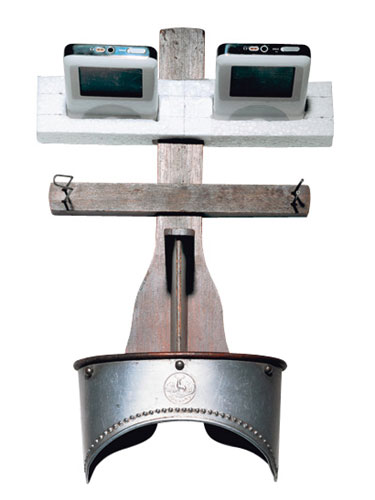
|


